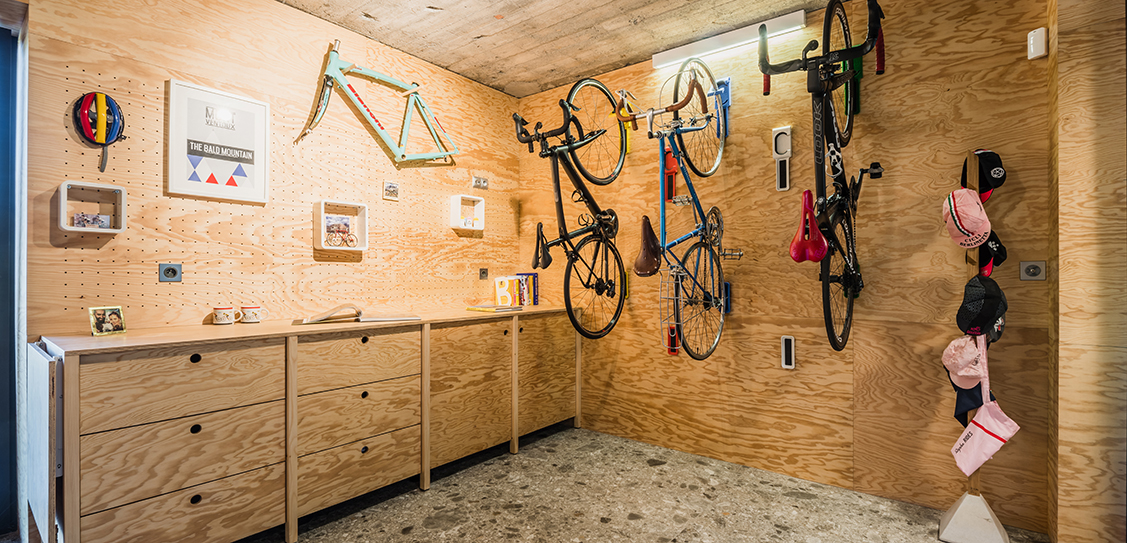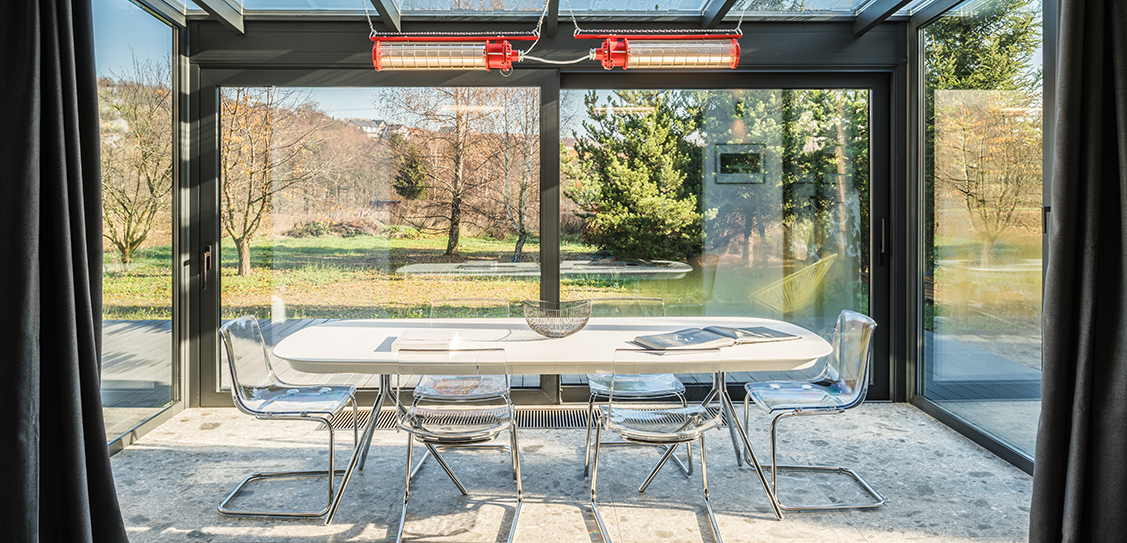For more than two decades, the landscapes of Polish villages have been filling up with ready-made design houses, given a relatively low price and quick implementation timeframe.
One of them, a decaying building in the Kraków valley of Kluczwoda offered up a challenge to architects.
They wanted to prove that a house built based on a catalogue project, could be turned into a modern building, full of surprises - interesting, contemporary and eclectic in style; but economical as well.
But the old building was to change without significant interference in the original form factor.
The shell
The building elevation got rid of all redundant items - the front window on the facade, under the roof, in the dormer section, were replaced with a huge, triangle-shaped pane of glass, allowing daylight to penetrate deep into the house on the first floor, where the gym equipment was now installed.
The back of the house (north-east), which boasts the most beautiful view towards Kluczwody Valley, was given an extension in place of the original small terrace, included in the reference design.
Now a full-year garden occupies this space, surrounded by large glass panes.
This was the only extension added to the original form factor of the house so that the living room reconfigured.
To hide the imperfections of the old building, an architectonic camouflage of sorts has been applied.
The wooden elevations were made with traditional roofing technologies, with larch as the base material and traditional wood shingle, also larch.
It meant the corners of the building could be rounded, giving the building a smoother feel.
The project of the building elevation, along with the new massive eaves masking the rafters and the triangle-shaped window, were developed by Jan Karpiel Bułecka Jr., of Karpiel Steindel Architektura from Zakopane.
This simple house was meant to blend into the surroundings.
The interior
All walls were removed inside the building and their support functions replaced with steel sections, painted black.
The interiors were developed by a designer, Agnieszka Brzostek AB Concept Design.
The design relies on a simple dichotomy of having cool-looking, modern ground floor, with concrete as the dominant material, the whites and the greys dominating the overall colour palette as a contrast.
This type of visual backdrop helps the many paintings and art pieces in the building properly stand out.
The first floor is the opposite: warm, cosy, made of spruce, following the traditional style of the Zakopane region.
This sophisticated design is juxtaposed with folk arts was to be made all the more apparent thanks to the massive tiles found its way to the floors in the entire ground floor section of the building.
They were to correspond with the concrete ceilings, which were left bare, with plasterwork removed.
These concrete accents are juxtaposed with brushed and rolled steel, used to turn the gigantic kitchen island into a sculpture, made on order, as well as the entrance door to the house.
The interior of the first floor, where the private section of the building is situated, relies heavily on spruce as the raw material.
The roof construction elements are exposed in their raw, unprocessed form.
The inspiration for the many interior-design details comes from the Podhale Region folk arts, to be found, among others, at Willa Oksza in Zakopane.
The interior’s wooden elements are contrasted with the blacks used on the floors.
Fresh accents are juxtaposed with dominant colours of the interiors.
Finally, there is the bathroom, tiled from top to bottom with granite, reminiscent of a mountain cave.



